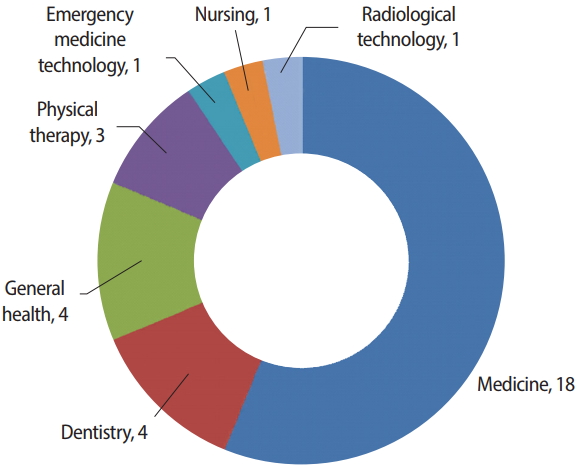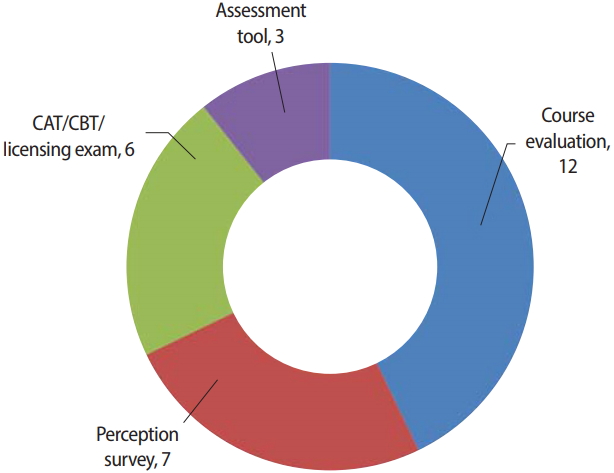Articles
- Page Path
- HOME > J Educ Eval Health Prof > Volume 15; 2018 > Article
-
Editorial
Bibliometric and content analysis of Journal of Educational Evaluation for Health Professions in 2018 -
Yera Hur*

-
DOI: https://doi.org/10.3352/jeehp.2018.15.35
Published online: December 28, 2018
Institute of Medical Education, Hallym University College of Medicine, Chuncheon, Korea
- *Corresponding email: shua@hallym.ac.kr
• Received: December 15, 2018 • Accepted: December 28, 2018
© 2018, Korea Health Personnel Licensing Examination Institute
This is an open-access article distributed under the terms of the Creative Commons Attribution License (http://creativecommons.org/licenses/by/4.0/), which permits unrestricted use, distribution, and reproduction in any medium, provided the original work is properly cited.
-
Authors’ contributions
All work was done by Yera Hur.
-
Conflict of interest
Yera Hur has been Associate Editor of the journal since 2015. Otherwise, no potential conflict of interest relevant to this article was reported.
-
Funding
None.
Article information
Acknowledgments
Supplementary material
Fig. 1.Classification of the 31 articles published in Journal of Educational Evaluation for Health Professions in 2018 according to discipline.


Fig. 2.Number of articles published in Journal of Educational Evaluation for Health Professions in 2018 by research content. CAT, computerized adaptive test; CBT, computer-based testing.


Fig. 3.Country of authors’ affiliation of 33 articles (excluding 2 corrigenda) published in Journal of Educational Evaluation for Health Professions in 2018.


- 1. Hur Y. Interesting statistics regarding the papers published in Journal of Educational Evaluation for Health Professions in 2017. J Educ Eval Health Prof 2017;14:36. https://doi.org/10.3352/jeehp.2017.14.36 ArticlePubMedPMCPDF
- 2. Orsini CA, Binnie VI, Tricio JA. Motivational profiles and their relationships with basic psychological needs, academic performance, study strategies, self-esteem, and vitality in dental students in Chile. J Educ Eval Health Prof 2018;15:11. https://doi.org/10.3352/jeehp.2018.15.11 ArticlePubMedPMCPDF
References
Figure & Data
References
Citations
Citations to this article as recorded by 

- Promotion to Top-Tier Journal and Development Strategy of the Annals of Laboratory Medicine for Strengthening its Leadership in the Medical Laboratory Technology Category: A Bibliometric Study
Sun Huh
Annals of Laboratory Medicine.2022; 42(3): 321. CrossRef
- Figure
- We recommend
- Related articles
-
- Editorial policies of Journal of Educational Evaluation for Health Professions on the use of generative artificial intelligence in article writing and peer review
- Journal of Educational Evaluation for Health Professions received the Journal Impact Factor, 4.4 for the first time on June 28, 2023
- Suggestion of more suitable study designs and the corresponding reporting guidelines in articles published in the Journal of Educational Evaluation for Health Professions from 2021 to September 2022: a descriptive study

 KHPLEI
KHPLEI

 PubReader
PubReader ePub Link
ePub Link Cite
Cite




